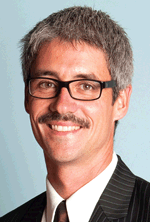An outcrop analogue for deepwater salt withdrawal mini-basins: lateral and vertical variations in basin-fill
Blaise I. L. Fernandes A C , Kathryn J. Amos A , Tobias H. D. Payenberg B and Simon Lang BA Australian School of Petroleum, The University of Adelaide, SA 5005, Australia.
B Chevron Australia Pty Ltd, 250 St Georges Terrace, Perth, WA 6000, Australia.
C Corresponding author. Email: bfds_net@hotmail.com
The APPEA Journal 58(2) 809-815 https://doi.org/10.1071/AJ17200
Accepted: 13 March 2018 Published: 28 May 2018
Abstract
Mini-basins are well known targets for petroleum exploration as they can contain significant hydrocarbon reserves, such as in the Gulf of Mexico. Though mini-basins have been studied before, their reservoir rock distributions remain poorly predictable. This is especially the case where mini-basins are near salt-diapirs. The Donkey Bore Syncline in the Flinders Ranges, South Australia, presents an excellently exposed deepwater mini-basin reservoir analogue. Detailed outcrop study, including vertical and lateral logged sections presented here, shed considerable light on the depositional system, especially with regards to depositional style and stages of basin-fill. Based on the observed facies and deposit geometries, the authors have been able to detect the change from a carbonate to a siliciclastic deposition system and interpret mini-basin-fill initiation and progradation processes. Sandy gravity-flow deposit lobe areas are identified, enclosed within shales. Along with paleocurrent data, these enable the description and interpretation of basin-fill stages and the lateral character of reservoir-analogue depositional tracts. This will be useful for better interpretation of mini-basin turbidite sequences and will help reduce uncertainties in subsurface exploration. This may also improve prediction of basin-fill where well spacing is inadequate.
Keywords: deepwater, depositional style, Donkey Bore Syncline, gravity-flow deposit, lateral changes, mini-basins, outcrop analogue turbidite, reservoir rock.

Blaise Fernandes is a PhD candidate at the Australian School of Petroleum (ASP), University of Adelaide. He completed an MSc in Geology from the Goa University in 1992 and a BSc in Geology from the same university in 1990. Blaise then joined the Department of Marine Sciences and Marine Biotechnology, Goa University, where he was a Junior and then Senior Research Fellow working on geological and geochemical limnology and environment. He subsequently also researched estuarine and shelf-zone sedimentation. From 1996, Blaise has worked as an oilfield geologist in the Asia-Pacific region and in a geotechnical and environmental consultancy in Goa. He has also been a Research Associate at the Australian School of Petroleum on a CO2CRC Surat Basin CO2 storage project. His PhD research is focussed on diapir-influenced deepwater mini-basin reservoir stratigraphy and sedimentology from an analogue in the Donkey Bore Syncline, Flinders Ranges, South Australia. |

Kathryn Amos is a Senior Lecturer at the ASP, University of Adelaide. Kathryn was awarded a PhD in 2004 from the University of East Anglia, UK and a BSc (Hons) in Environmental Sciences in 1999 from the same university. Her first sedimentologic love was turbidity currents, which her PhD and postdoctoral research at the University of Leeds was based on. Working with dryland fluvial sedimentology during her PhD drew Kathryn to Australia in 2005, to hold research positions at the University of New South Wales (UNSW@ADFA) and then the ASP in 2007. She took on leadership of the Lake Eyre Basin Analogues Research Group industry consortium in 2008 and moved into a lectureship position in 2010. Kathryn’s research focus is on the processes controlling sediment deposition, spanning experimental sediment gravity flows, and sedimentologic and stratigraphic investigation of modern and ancient deposits from fluvial, marginal marine and deepwater environments. |

Tobi Payenberg is a Stratigrapher with Chevron Australia Pty Ltd, an Adjunct Research Fellow at the University of Western Australia and an Associate Editor for the Journal of Sedimentary Research. His research interests are in the stratigraphy and reservoir architecture of fluvial and shallow marine deposits and their implications for hydrocarbon production. Tobi has (co-)published over 25 refereed articles and 60 conference presentations. He holds a BSc from Aachen University of Technology, Germany, a MSc from the Queensland University of Technology, Australia, and a PhD from the University of Toronto, Canada. Prior to Chevron, Tobi was an Exploration Geologist with Nexen Inc., Calgary and an Associate Professor at The University of Adelaide. |

Simon Lang has 30 years’ stratigraphy experience on basins across the world, with an extensive publication record. He joined Chevron in 2013 as a senior consultant in the Seismic Stratigraphy and Geomorphology team in Houston, Texas, USA, and has been the Geologic Services Manager for Chevron Australia Pty Ltd, in Perth, WA, since 2016. His current role includes advising on all aspects of stratigraphy for Asset Development. He was Co-ordinator, Sequence Stratigraphy and Reservoir Analyst for Woodside Energy from 2005–2013. From 1999–2005 he was Associate Professor at the Australian School of Petroleum, University of Adelaide, and Lecturer at Queensland University of Technology from 1992–1999. He worked for the Geological Survey of Queensland before that. He has a BSc and PhD from the University of Queensland, Australia. A major theme of his research has been modern and ancient analogues for petroleum reservoir modelling. Simon is a member of AAPG, SEPM and PESA and was PESA Distinguished Lecturer (2010). |
References
Alsop, G. I., Brown, J. P., Davison, I., and Gibling, M. R. (2000). The geometry of drag zones adjacent to salt diapirs. Journal of the Geological Society 157, 1019–1029.| The geometry of drag zones adjacent to salt diapirs.Crossref | GoogleScholarGoogle Scholar |
Elshahawi, H. (2014). Deepwater Exploration and Production in the Gulf of Mexico-Challenges and Opportunities. Petrophysics 55, 81–87.
Gravestock, D. I. (1995). Early and Middle Palaeozoic, Arrowie Basin. In ‘The Geology of South Australia, Vol 2, the Phanerozoic’. (Eds J.F. Drexel and W.V. Preiss) South Australia Geological Society, Bulletin 54, pp. 3–61.
Gravestock D. I., and Cowley, W. M. (1995). Early and Middle Palaeozoic-Arrowie Basin. In ‘The Geology of South Australia, Vol. 2, the Phanerozoic’. (Eds J.F. Drexel and W.V. Preiss) South Australia Geological Society, Bulletin 54, pp. 20–31.
Gravestock, D. I., and Hibburt, J.E. (1991). Sequence stratigraphy of the Eastern Officer and Arrowie basins: a framework for Cambrian oil search. The APPEA Journal 31, 177–190.
| Sequence stratigraphy of the Eastern Officer and Arrowie basins: a framework for Cambrian oil search.Crossref | GoogleScholarGoogle Scholar |
Haslett, P. G. (1976). Lower Cambrian stratigraphy and sedimentology, Old Wirrealpa Springs, Flinders Ranges, South Australia. PhD thesis, University of Adelaide (unpublished).
Lemon, N. M. (1985). Physical modelling of sedimentation adjacent to diapirs and comparison with Late Precambrian Oratunga breccia body in Central Flinders Ranges, South Australia. AAPG Bulletin 69, 1327–1338.
Lemon, N. M. (1988). Diapir recognition and modelling with examples from Late Proterozoic Adelaide Geosyncline, Central Flinders Ranges, South Australia. Ph.D. Thesis, University of Adelaide, Adelaide, SA.
Mutti, E. (1992). ‘Turbidite Sandstones. Special Publication’ (Agip: Milan).
Mutti, E., and Normark, W. R. (1991). An integrated approach to the study of turbidite system. In ‘Seismic Facies and Sedimentary Processes of Submarine Fans and Turbidite Systems’ (Eds P. Weimer and H. Link) pp. 75–106. (Springer- Verlag: New York).
Mutti, E., Davoli, G., Mora, S., and Papani, L. (1994). Internal stacking patterns of ancient turbidite systems from collisional basin. In ‘15th Annual Research Conference Submarine Fans and Turbidite Systems’ (Eds P. Weimer, A.H.Bouma and B.F. Perkins), pp. 257–268. Gulf Coast Section – SEPM Foundation.
Mutti, E., Tinterri, R., Remacha, E., Mavilla, N., Angella, S., and Fava, L. (1999). An introduction to the analysis of ancient turbidite basins from an outcrop perspective. American Association of Petroleum Geologists Continuing Education Course Note Series 39, 61pp.
Parker, A. J. (1993). Introduction. In ‘The Geology of South Australia, Vol 1, The Precambrian’. (Eds J.F. Drexel, W.V. Preiss and A.J. Parker). South Australia Geological Society, Bulletin 54.
Preiss, W. V. (2000). The Adelaide Geosyncline of South Australia and its significance in Neoproterozoic continental reconstruction. Precambrian Research 100, 21–63.
| The Adelaide Geosyncline of South Australia and its significance in Neoproterozoic continental reconstruction.Crossref | GoogleScholarGoogle Scholar |
Stow, D. A. V., Reading, H. G., and Collinson, J. D. (1996). Deep seas. In ‘Sedimentary Environments: Processes, Facies and Stratigraphy’. (Ed. H.G. Reading) pp. 395–453. (Blackwell Science: Oxford).
Talling, P. J., Masson, D. G., Sumner, E. J., and Malgesini, G. (2012). Subaqueous sediment density flows: Depositional processes and deposit types. Sedimentology 59, 1937–2003.
| Subaqueous sediment density flows: Depositional processes and deposit types.Crossref | GoogleScholarGoogle Scholar |
Weimer, P., and Slatt, R. M. (2007). Petroleum geology of deepwater settings. AAPG Studies in Geology 57, American Association of Petroleum Geologists, Tulsa, 240, 816pp.


